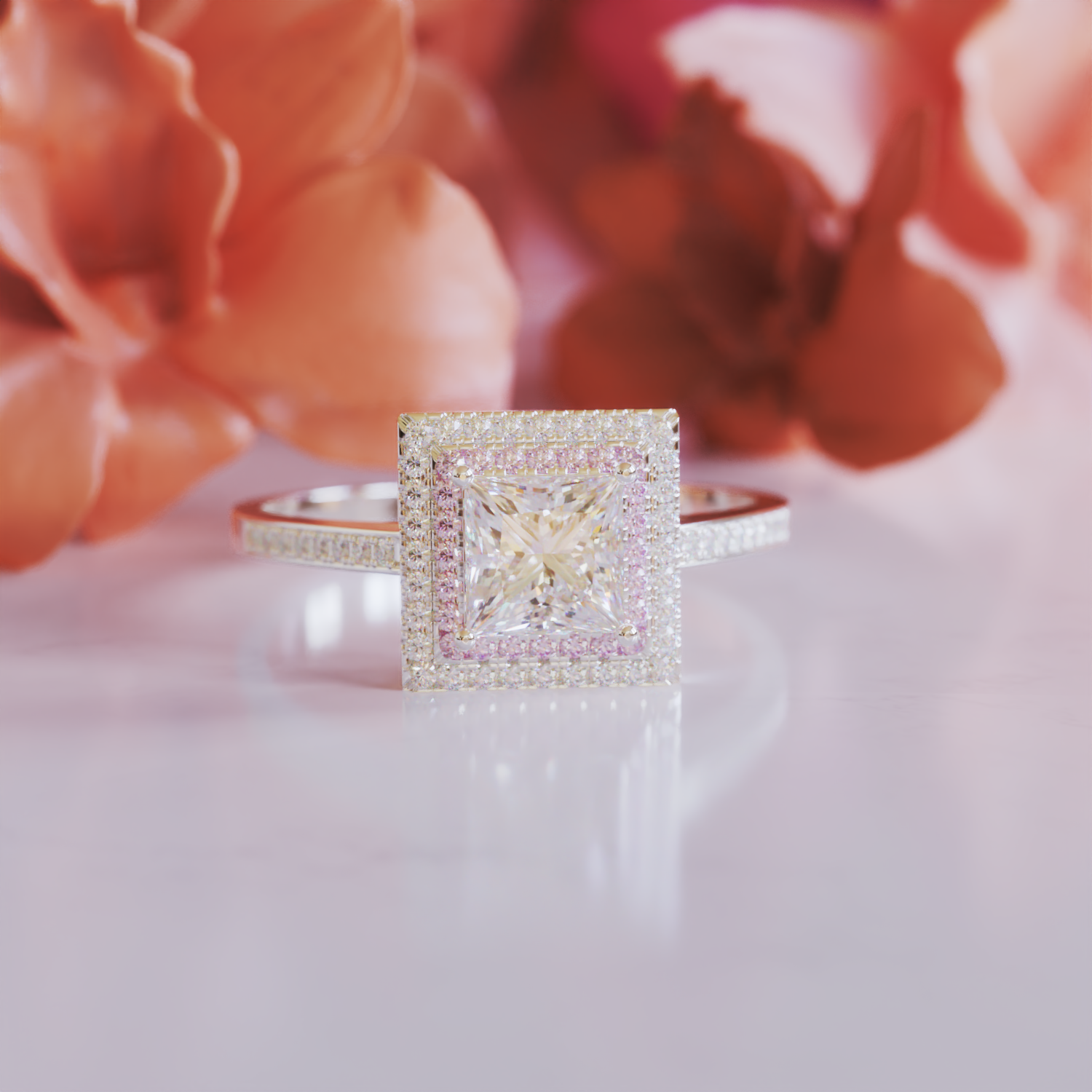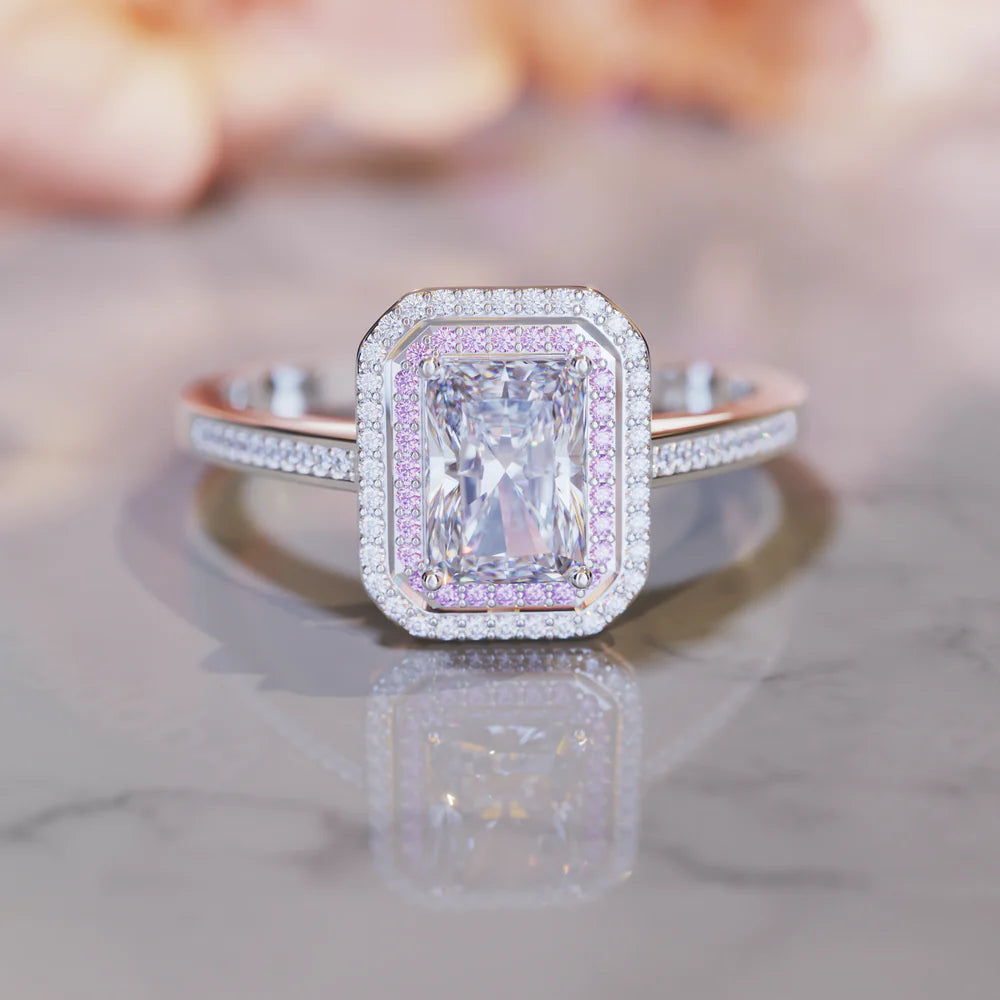
Why Moissanite Shines Brighter Than Diamond: A Scientific Breakdown
When it comes to sparkle, moissanite has gained a reputation as a gemstone that actually outshines diamonds. But what exactly makes moissanite sparkle more? The answer lies in its unique optical properties and how it interacts with light. In this article, we’ll break down the science behind why moissanite shines brighter than diamond, covering aspects like refractive index, dispersion, and crystal structure.
1. Understanding Sparkle: The Basics of Brilliance, Fire, and Scintillation
To understand why moissanite sparkles more intensely than diamond, we first need to look at three components that define sparkle:
- Brilliance: The white light that reflects back from the stone.
- Fire: The dispersion of light into colors, creating a rainbow effect.
- Scintillation: The “twinkling” effect produced as the stone moves under light.
Moissanite exhibits high levels of all three, especially “fire,” which gives it a more noticeable rainbow sparkle than diamond.
2. Refractive Index: Why Moissanite Has Superior Brilliance
The refractive index (RI) measures how much light bends when entering a gemstone. The higher the RI, the more the stone will sparkle.
- Moissanite’s RI: 2.65–2.69
- Diamond’s RI: 2.42
With a refractive index of 2.65-2.69, moissanite is scientifically proven to bend light more than diamond. This means that light entering moissanite is refracted (or bent) more dramatically, creating a brighter, more dazzling effect. This is why, even in low-light settings, moissanite tends to shine more intensely than diamonds.
3. Dispersion: The Science Behind Moissanite’s Fire
Dispersion, also known as "fire," measures how a gemstone splits white light into its spectral colors. This effect is what gives certain gemstones a rainbow-like sparkle.
- Moissanite’s Dispersion: 0.104
- Diamond’s Dispersion: 0.044
Moissanite’s dispersion value of 0.104 is more than twice that of diamond. This higher dispersion means moissanite produces a more vivid display of colors. So, under natural sunlight or direct light, moissanite exhibits a colorful, almost “rainbow” effect, while diamonds primarily display white light. This is one of the main reasons why many people describe moissanite’s sparkle as more “flashy” or “fiery.”
4. Crystal Structure: The Stability of Moissanite’s Sparkle
The crystal structure of a gemstone impacts how it reflects light. Diamonds have a cubic crystal structure, while moissanite has a hexagonal crystal structure.
- Cubic Crystal Structure (Diamond): More predictable and consistent, creating a classic sparkle.
- Hexagonal Crystal Structure (Moissanite): Reflects light at different angles, enhancing the dispersion and fire.
Moissanite’s hexagonal structure allows it to interact with light differently than a diamond’s cubic structure. This is one of the reasons moissanite can produce a more intense sparkle, as its structure encourages light to refract at multiple angles, leading to a more dramatic display.
5. Hardness and Clarity: Factors That Preserve Sparkle
Hardness and clarity both contribute to how well a gemstone maintains its sparkle over time. Here’s how moissanite and diamond compare:
- Hardness: Diamonds are rated 10 on the Mohs scale, making them the hardest natural substance. Moissanite is close behind at 9.25, making it exceptionally resistant to scratching.
- Clarity: Moissanite is typically lab-grown, meaning it’s free from most inclusions (natural imperfections) that can dull a diamond’s sparkle. Natural diamonds often contain inclusions, which can reduce brilliance.
Since moissanite is less prone to imperfections, it maintains a high level of sparkle. Diamond’s clarity can vary widely, and stones with lower clarity grades may not reflect light as efficiently as high-quality moissanite.
6. Heat Resistance: Keeping the Sparkle in Intense Conditions
Another factor that influences a gemstone’s sparkle is heat resistance. Moissanite has a unique advantage here.
- Moissanite’s Heat Resistance: Can withstand temperatures up to 2,000°F (1,093°C) without losing its optical properties.
- Diamond’s Heat Resistance: While still very high, diamonds can lose structural integrity under extreme conditions.
Moissanite’s high heat resistance means it retains its color, clarity, and brilliance, even in conditions that might affect a diamond. This makes moissanite ideal for everyday wear, as it maintains its fiery brilliance regardless of environmental conditions.
Summary Comparison: Moissanite vs Diamond Sparkle
Here’s a quick overview of how moissanite compares to diamond in terms of sparkle-related properties:
| Property | Moissanite | Diamond |
|---|---|---|
| Refractive Index | 2.65–2.69 | 2.42 |
| Dispersion (Fire) | 0.104 | 0.044 |
| Crystal Structure | Hexagonal | Cubic |
| Hardness | 9.25 (Very durable) | 10 (Most durable) |
| Heat Resistance | Up to 2,000°F | Lower than 2,000°F |
| Clarity Consistency | Consistently high due to lab-grown production | Varies widely, often with inclusions |
7. Why Moissanite is Perfect for Those Who Want Maximum Sparkle
For anyone looking for a gemstone that truly shines in all lighting conditions, moissanite is a top choice. Its higher refractive index and dispersion make it a standout in terms of sparkle. It’s especially ideal for those who want an ethical and budget-friendly alternative to diamond without compromising on beauty or durability.
In Summary:
- Moissanite outshines diamond in terms of fire and brilliance due to its unique optical properties.
- Cost-Effective: It provides intense sparkle without the high cost of diamonds.
- Ethically Made: Moissanite’s lab-grown origins mean it’s both conflict-free and eco-friendly.
- Everyday Ready: Its high heat resistance and near-scratch-proof surface make it ideal for daily wear.
Ready to Experience Moissanite’s Brilliance?
If you’re interested in the exceptional sparkle that moissanite offers, check out our best-selling moissanite rings to find the perfect piece that matches your style and values.









































Leave a comment
This site is protected by hCaptcha and the hCaptcha Privacy Policy and Terms of Service apply.